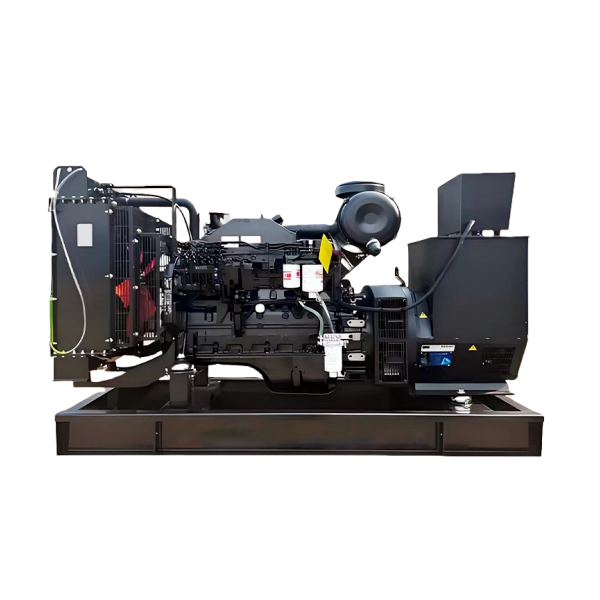Table of Contents
-
Understanding the Lubrication System
-
Common Causes of Low Oil Pressure
2.1 Inadequate Oil Quantity
2.2 Incorrect Oil Viscosity
2.3 Clogged or Faulty Components
2.4 Excessive Engine Temperature
2.5 Mechanical Wear and Clearances
2.6 Contamination Issues -
Diagnostic Procedures
-
Preventive Measures
-
Conclusion
Ensuring proper oil pressure in a diesel generator is vital to protect its internal components from excessive wear and potential failure. Low oil pressure can result in inadequate lubrication, increased friction, and eventual engine damage. This comprehensive guide explains the inner workings of a diesel generator’s lubrication system, outlines common causes for low oil pressure, and provides practical diagnostic and remedial steps.

Understanding the Lubrication System
In a diesel generator, the lubrication system is designed to maintain a consistent oil pressure that enables:
-
Effective Lubrication: Oil must reach all moving parts (e.g., crankshaft, bearings, piston rings) to minimize friction.
-
Heat Dissipation: As oil circulates, it carries away heat generated during operation.
-
Contaminant Removal: Continuous flow helps remove impurities and debris from critical engine components.
Even slight deviations from the optimal oil pressure can disrupt this balance, leading to issues such as accelerated wear or catastrophic engine failure.
Common Causes of Low Oil Pressure
Several factors can contribute to a drop in oil pressure. Here are the key causes:
1. Inadequate Oil Quantity
-
Low Oil Level: Insufficient oil in the crankcase can lead to pump cavitation, where air is drawn into the system, drastically reducing pressure.
-
Solution: Always check the oil level before starting the generator and top up with the recommended oil grade if necessary.
2. Incorrect Oil Viscosity
-
Seasonal Variations: Diesel generators require different oil grades depending on the ambient temperature and operating conditions.
-
Impact: Using oil with a viscosity that is too low can cause excessive leakage through engine clearances.
-
Solution: Use the oil grade recommended by the manufacturer, adjusting for seasonal changes and regional climates.
3. Clogged or Faulty Components
-
Oil Filter Blockage: A clogged oil filter can impede oil flow, reducing pressure.
-
Damaged Oil Pump or Bypass Valve: Malfunctioning components may not maintain the necessary pressure.
-
Solution: Regularly inspect and replace the oil filter, and check the oil pump and bypass valve for proper operation.
4. Excessive Engine Temperature
-
Overheating: Factors such as poor cooling system performance, prolonged overload, or delayed fuel injection can elevate engine temperatures.
-
Effect on Oil: Elevated temperatures can thin the oil (reduce its viscosity), resulting in lower pressure.
-
Solution: Ensure proper cooling, adjust fuel injection timing, and avoid extended periods of overloading the generator.
5. Mechanical Wear and Clearances
-
Worn Bearings or Gaskets: Over time, increased clearances in critical areas (e.g., valve rocker arms, connecting rod bearings) can allow oil to leak, reducing system pressure.
-
Solution: Monitor and maintain the engine’s internal clearances through scheduled inspections and maintenance.
6. Contamination Issues
-
Diesel or Water Intrusion: Diesel mixing with the oil, or water ingress (from degraded gaskets or cooling system leaks), can compromise oil properties.
-
Impact: Contaminated oil loses its lubricating ability and may trigger premature wear.
-
Solution: Periodically test the oil for contamination, replace it as recommended, and address any issues in the cooling or sealing systems.
Diagnostic Procedures
When facing low oil pressure, follow these steps for an accurate diagnosis:
-
Visual Inspection:
-
Remove the valve cover to check for proper oil seepage at the rocker arms.
-
Confirm that, under both idle and high-speed conditions, oil flow matches expected behavior.
-
-
Oil Pressure Gauge Testing:
-
Use an external oil pressure gauge to verify readings. Remember that oil pressure is temperature-dependent (typically, oil pressure drops by about 7 KPa for every 3°C increase in oil temperature).
-
-
Systematic Check:
-
Inspect the oil pump gears, casing, and bypass valve.
-
Examine all external oil seals and gaskets for leakage.
-
Clean or replace any clogged components such as the oil filter or suction screen.
-
-
Oil Quality and Level Assessment:
-
Ensure the oil level meets the recommended mark.
-
Verify that the oil is of the correct grade and free from contaminants like diesel or water.
-
Preventive Measures
To maintain optimal oil pressure and extend the lifespan of your diesel generator, consider the following tips:
-
Routine Maintenance: Regularly inspect and service the lubrication system, including oil changes and filter replacements.
-
Environment-Specific Oil Selection: Choose oil grades that match the ambient temperature and operational demands.
-
Monitor Engine Temperature: Keep the cooling system in check to prevent overheating and subsequent oil degradation.
-
Scheduled Diagnostics: Use both built-in sensors and external gauges periodically to ensure oil pressure readings remain within manufacturer specifications.
Conclusion
Low oil pressure in diesel generators is a serious issue that can lead to severe engine damage if not addressed promptly. By understanding the lubrication system, recognizing the potential causes of pressure drops, and following systematic diagnostic and maintenance procedures, operators can prevent significant mechanical failures. Adopting a proactive maintenance strategy not only safeguards the generator’s longevity but also ensures reliable performance under varying operational conditions.
 XN-GEN.COM
XN-GEN.COM


